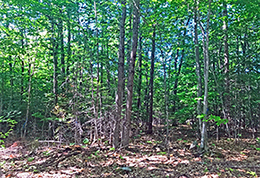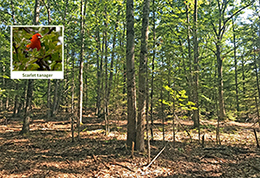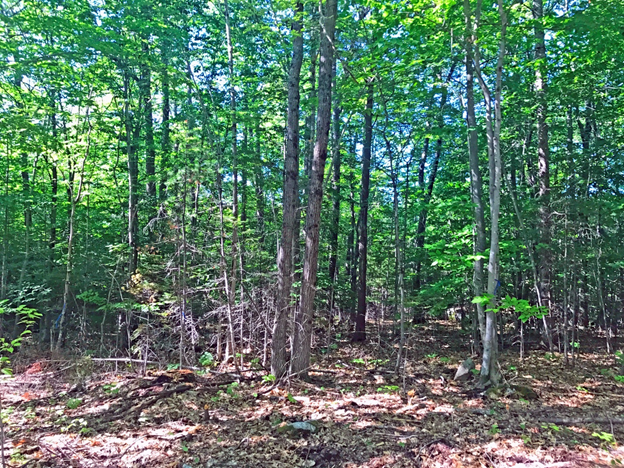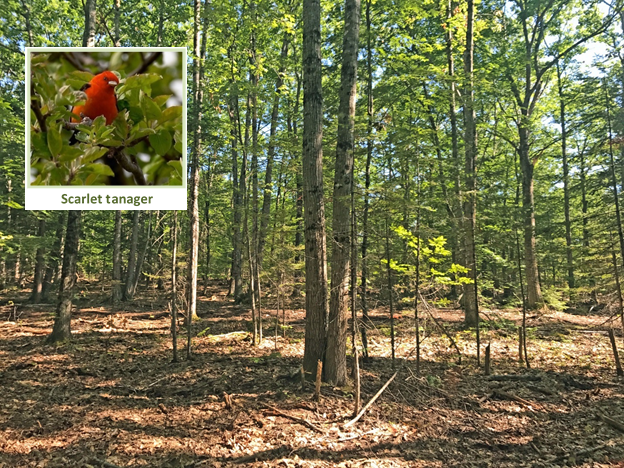DACF Home → Bureaus & Programs → Maine Forest Service → Projects → What will my woods look like? → Thinning and Crown Release: Hardwood pole and small sawtimber stand
Thinning and Crown Release
Hardwood pole and small sawtimber stand

Woodland Owners’ View
There are too many trees in this stand. It’s crowded with maple and oak. If the stand has some of the trees removed next to the best trees, then the remaining trees will grow better and faster.
Logger’s View
This size wood is ideal for a mechanical harvester and small chipper. Flat, old field ground like this is pretty easy on the fuel tank, too. Looks like a good chance.
Forester’s View
A typical old field grown up to oak and maple, in this case. The stand is overstocked. Recommend bringing down to B-line and favoring the best pole and sawlog quality red oak, maples and birch, releasing crowns on two to three sides.

Woodland Owners’ View
Much better to see through, for hunting and just walking around the rest of the year. The remaining trees are going to benefit from the extra light and space.
Forester’s View
Now the stand is near optimum stocking; residual stand damage is negligible, and the remaining crop trees should increase in growth and value over the next cutting cycle. Look at this again in about ten years.
Wildlife Outcome
Scarlet tanagers and other songbirds prefer predominantly oak stands with a fairly closed upper canopy.
Equipment Used
Three-wheeled feller buncher, small grapple skidder, commercial chipper.

